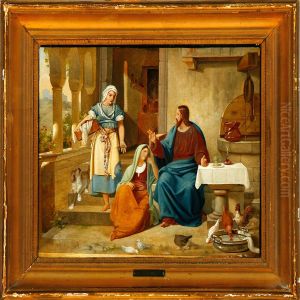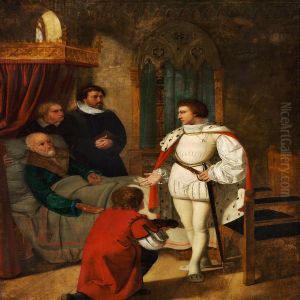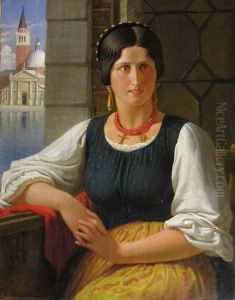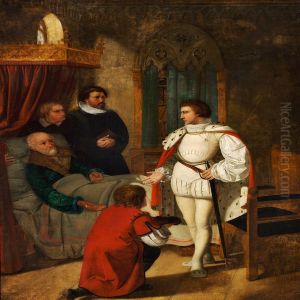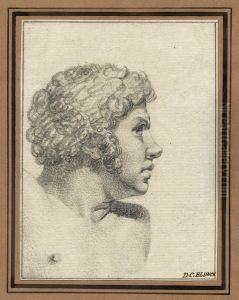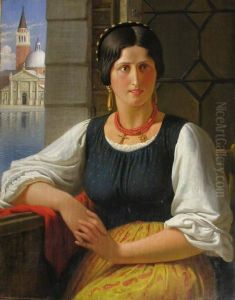Ditlev Konrad Blunck Paintings
Ditlev Konrad Blunck was a notable Danish painter born on June 22, 1798, in Neustrelitz, now part of Germany. His contribution to art is primarily associated with the Danish Golden Age, a period of exceptional creativity and artistic expression in Denmark during the first half of the 19th century. Blunck's oeuvre includes a variety of genres, from portraits and historical scenes to genre paintings, showcasing his versatility and skill.
Blunck's early life was marked by his relocation to Denmark, where he pursued his passion for art. He was initially trained by the painter Christian August Lorentzen, and later, he attended the Royal Danish Academy of Fine Arts in Copenhagen, where he studied under the tutelage of Christoffer Wilhelm Eckersberg. Eckersberg, known as the father of Danish painting, had a significant influence on Blunck's development as an artist, instilling in him the values of precision, realism, and a keen observation of light and shadow.
In 1827, Blunck's talent was recognized with a travel grant from the Academy, which enabled him to study abroad. He spent time in Rome, a center for artists from across Europe, where he was influenced by the Nazarenes, a group of German Romantic painters who aimed to revive honesty and spirituality in Christian art. This period was crucial in shaping Blunck's style, evident in his later works that often incorporated elements of Romanticism and Neoclassicism.
Despite his accomplishments, Blunck's career was not without controversy. In the 1840s, he faced personal difficulties and scandal, which led to his departure from Denmark. He spent the latter part of his life in Hamburg, Germany, where he continued to work until his death on January 7, 1853. Throughout his career, Blunck contributed to the Danish Golden Age with his artistic achievements, leaving behind a legacy that includes both religious motifs and depictions of everyday life. His works are preserved in several museums, including the Statens Museum for Kunst (National Gallery of Denmark), highlighting his enduring impact on Danish art history.
